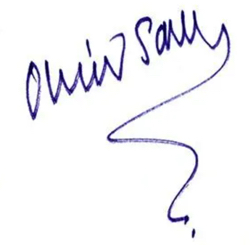Footnote of the Month: May 2010
Writing, a cultural tool, has evolved to make use of the inferotemporal neurons’ preference for certain shapes. “Letter shape,” as Stanislas Dehaene writes, “is not an arbitrary cultural choice”—it is dictated by our neural proclivities.
The earliest written languages used pictorial or iconic symbols, which became increasingly abstract and simplified. There were thousands of distinct hieroglyphs in Egypt and tens of thousands of ideograms in classical Chinese; reading (and writing) such a language demands a great deal of training and, presumably, the dedication of a larger portion of the visual cortex. This, Dehaene suggests, may be why most human languages have tended to favor alphabetic systems.
And yet there may be certain powers, certain qualities peculiar to ideograms. Jorge Luis Borges, who was well versed in Japanese poetry, spoke of the multiple connotations of kanji ideograms in an interview:
“The Japanese have achieved a wise ambiguity in their poetry. And that, I believe, is because of their particular form of writing itself, because of the possibilities that their ideograms present. Each one, according to its features, can have several connotations. Take, for example, the word ‘gold.’ This word represents or suggests autumn, the color of leaves, or the sunset because of its yellow color.”
From The Mind’s Eye, Chapter 4.








